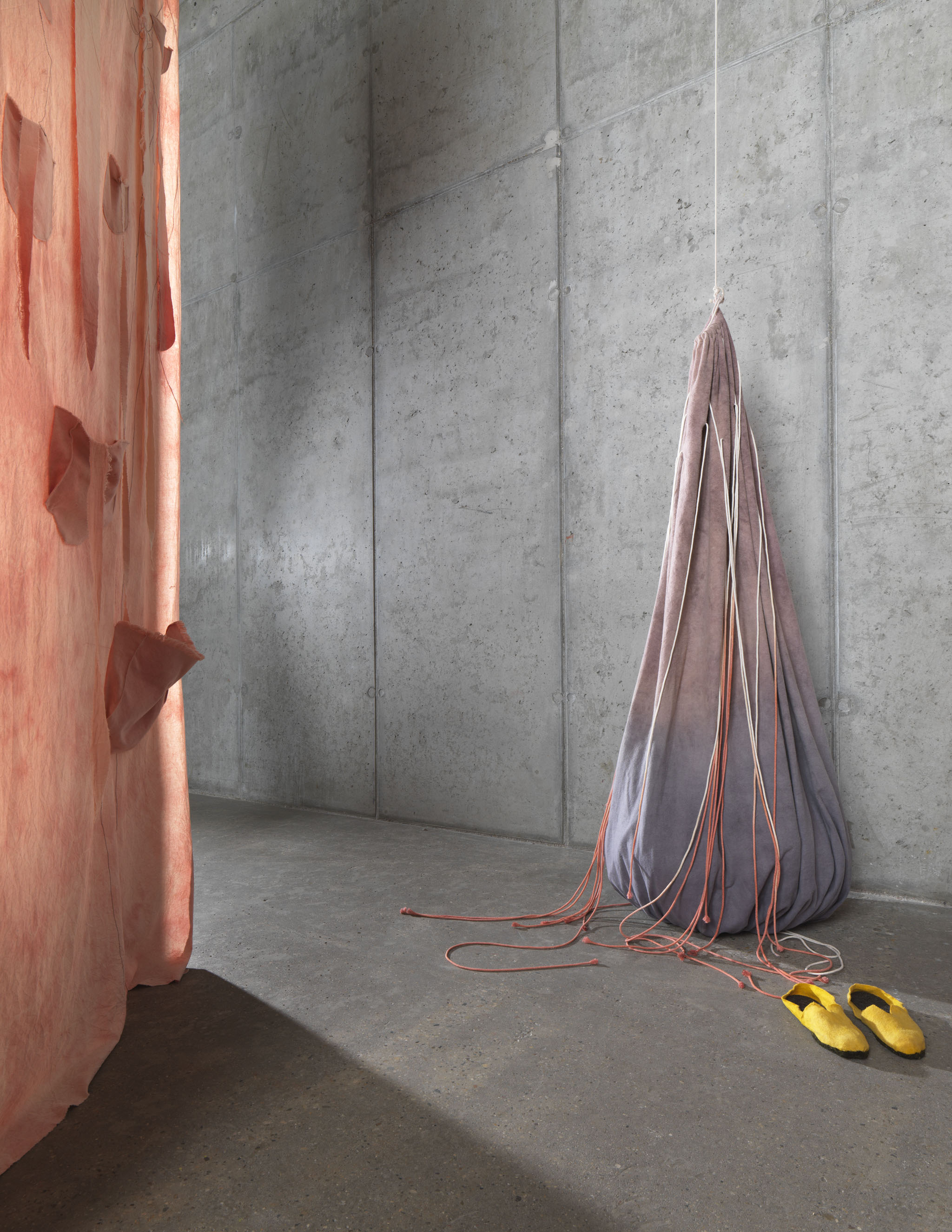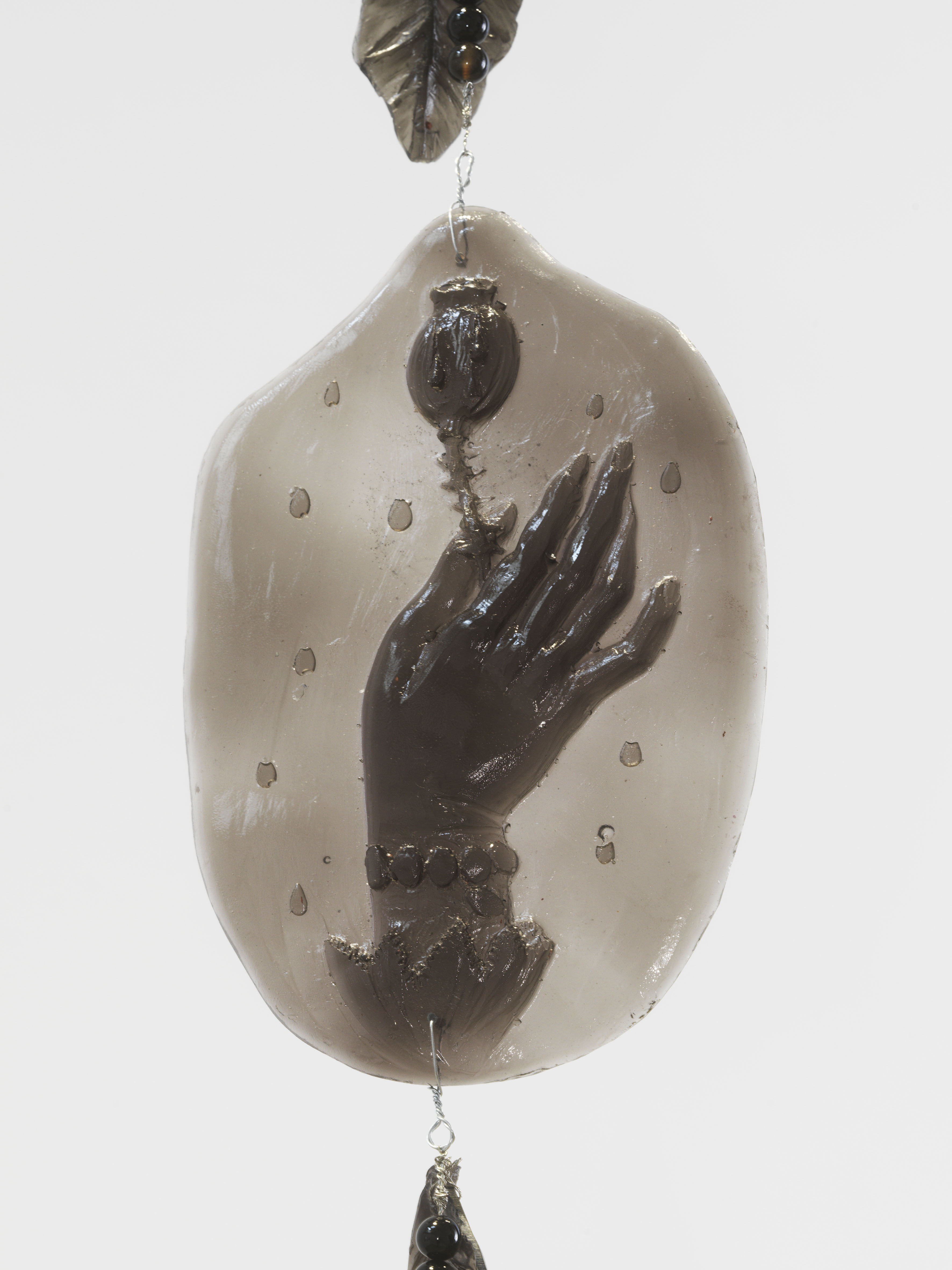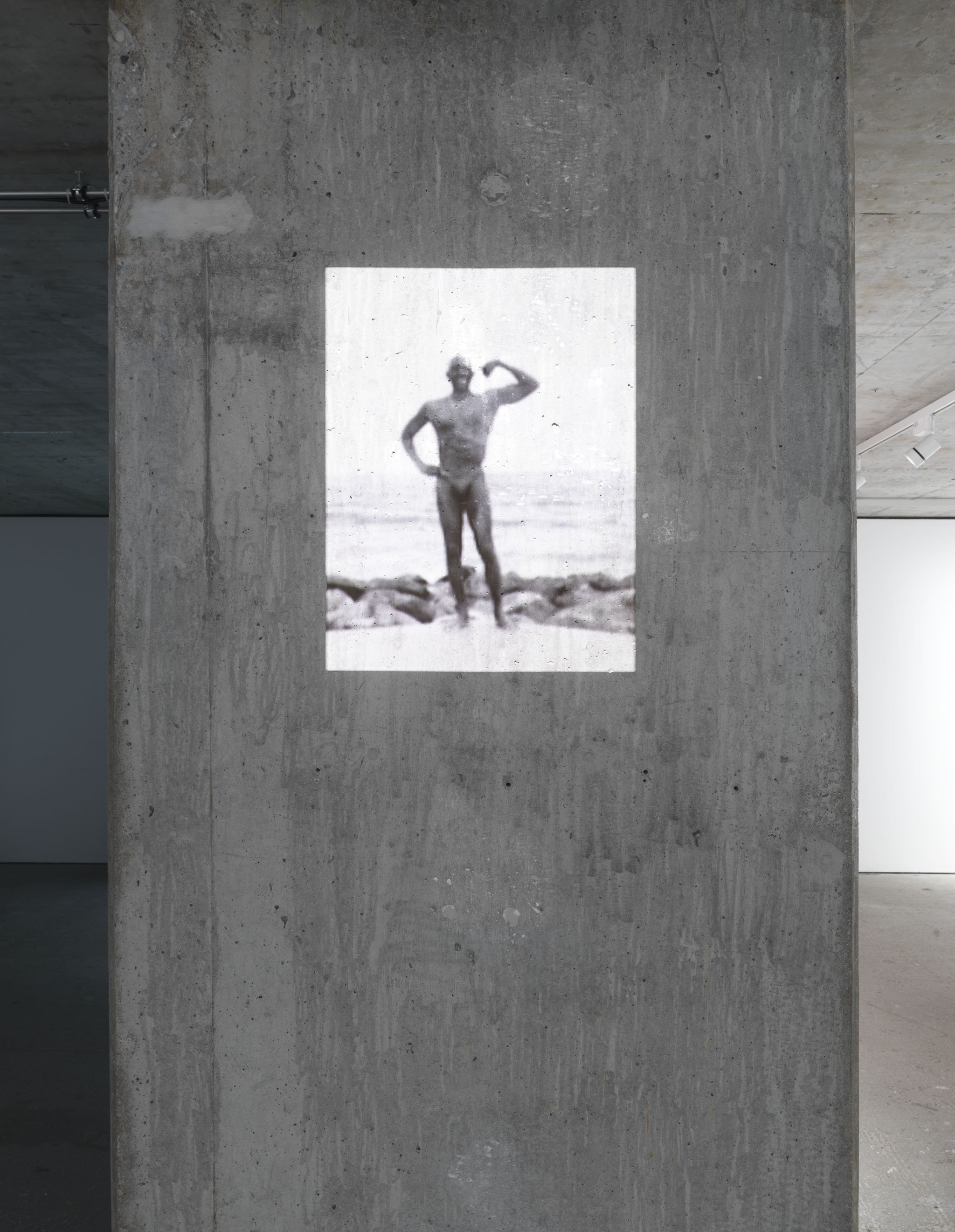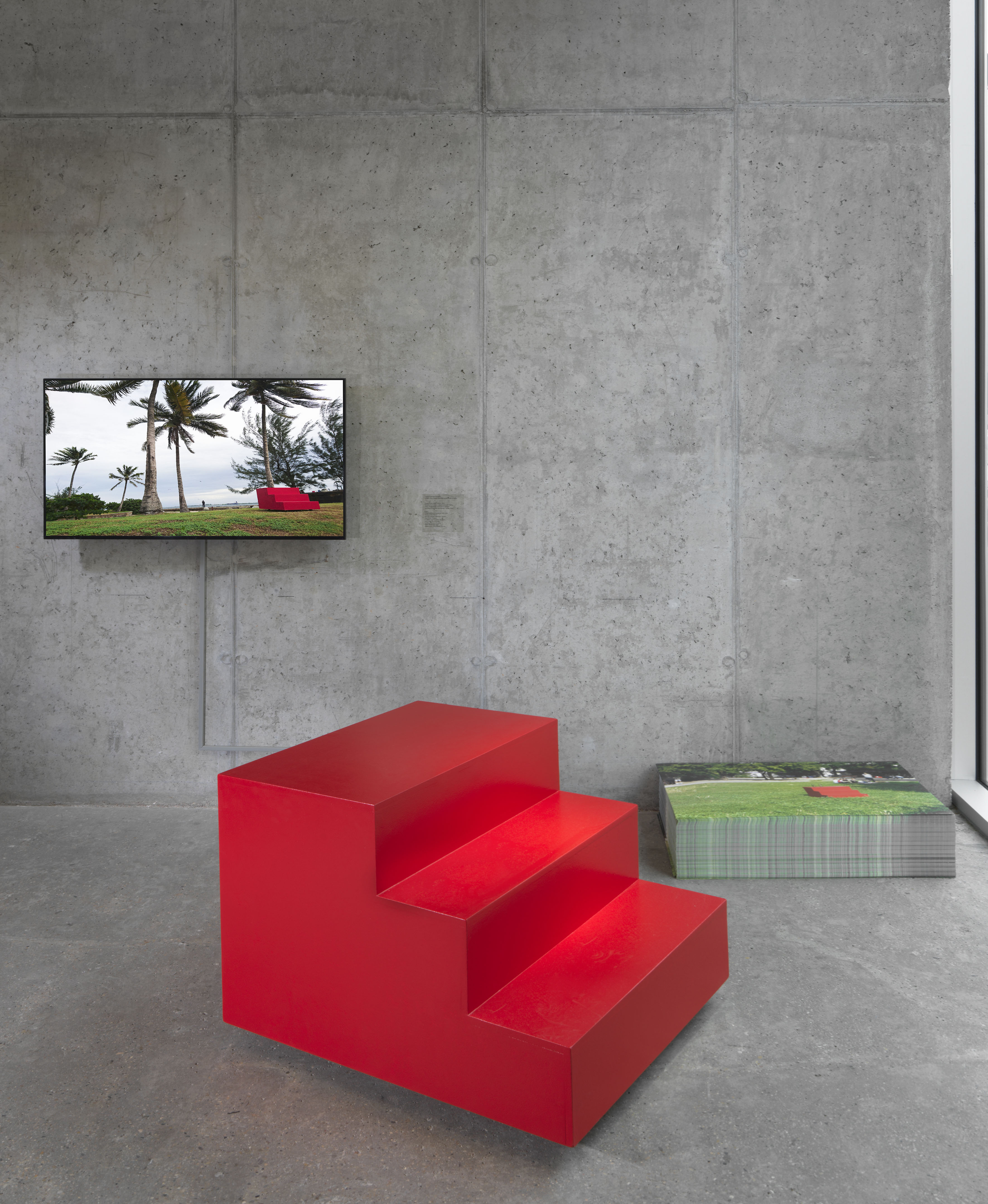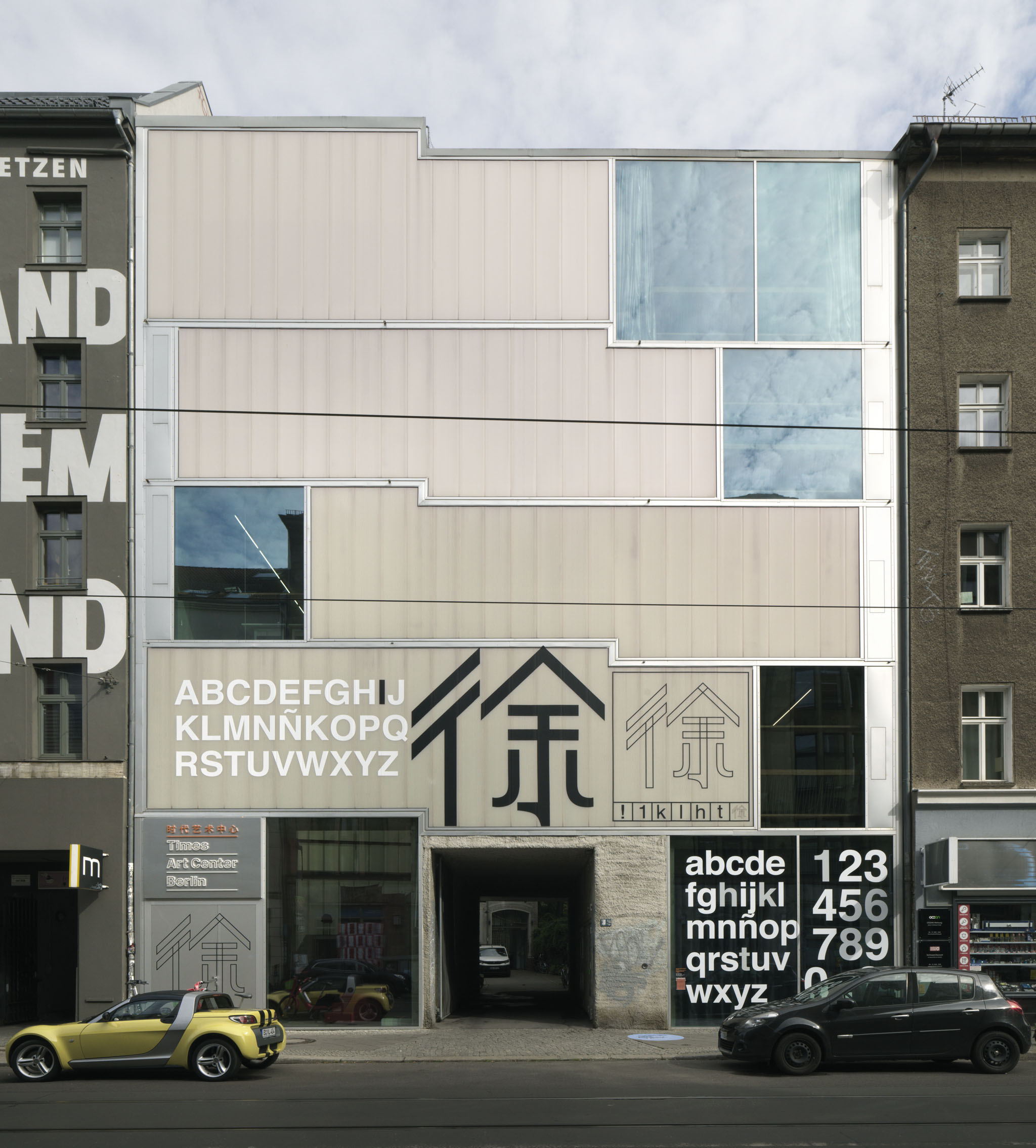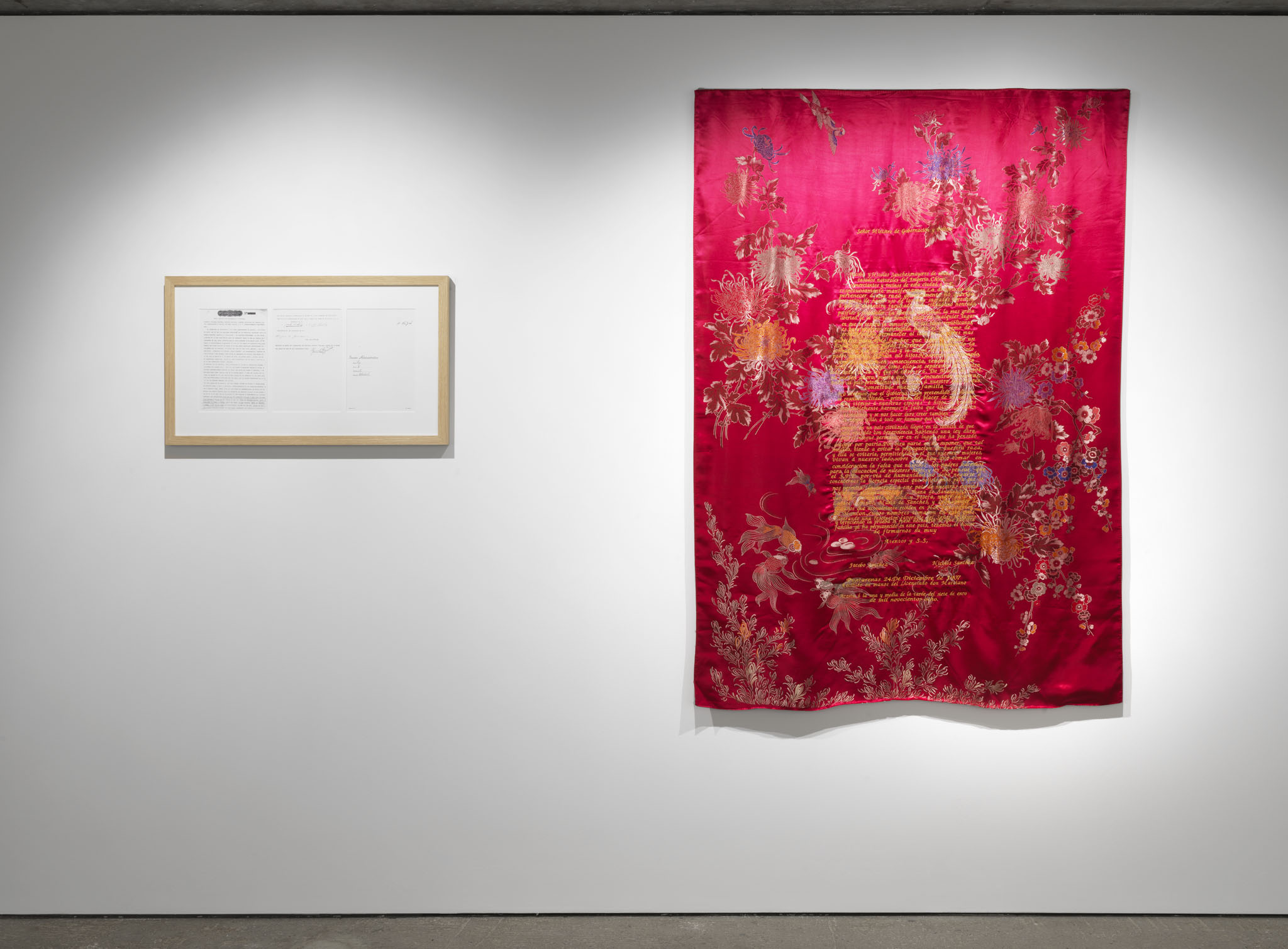Mimian Hsu
Family Portrait in Helvetica
2021
Vinyl on facade
Dimensions variable
Commissioned by Times Art Center Berlin
Courtesy of the artist
Family Portrait in Helvetica is a work of self-reference, like the majority of Mimian Hsu’s artistic practice. The artist deals with the subject of cultural hybridization as a product of immigration. In this case, the language she uses distances itself from the oriental and Latin American baroque imagery to express itself in a more rational context with Chinese characters and a universal typographic language commonly used in graphic design. The Portrait consists of the construction of the character “Hsu,” the artist’s last name. It uses letters of the Roman alphabet in the Helvetica typeface, which is considered a leading typeface in the “International Typographic Style” (a modernist trend of the 20th century). The work is a nonfigurative portrait in which Hsu uses the capacity of the symbol to externalize an idea in an abstract manner. Creating something of these elements becomes a significant part in the interpretation of the work: her last name’s character is the graphic representation not only of the word ‘Hsu,’ but also of the idea of her family identity.
No. 1674, Sección Administrativa, Version 1 & 2
2007
Embroidered Chinese bedspread and a copy of a document from the National Archive of Costa Rica
Dimensions variable
Courtesy of the artist and Inti Guerrero
No. 1674, Sección Administrativa is inspired by a letter written in 1907 by Chinese immigrants requesting that the government of Costa Rica grant an official permit to bring their wives and children from mainland China to the Central American country. Hsu's work interweaves this historical document with traditional material symbols: the fabric is a Chinese silk cloth, often used to make bedspreads for newlyweds. The color red is traditionally used in festivities; while the thread used to embroider is golden, representing luxury.
